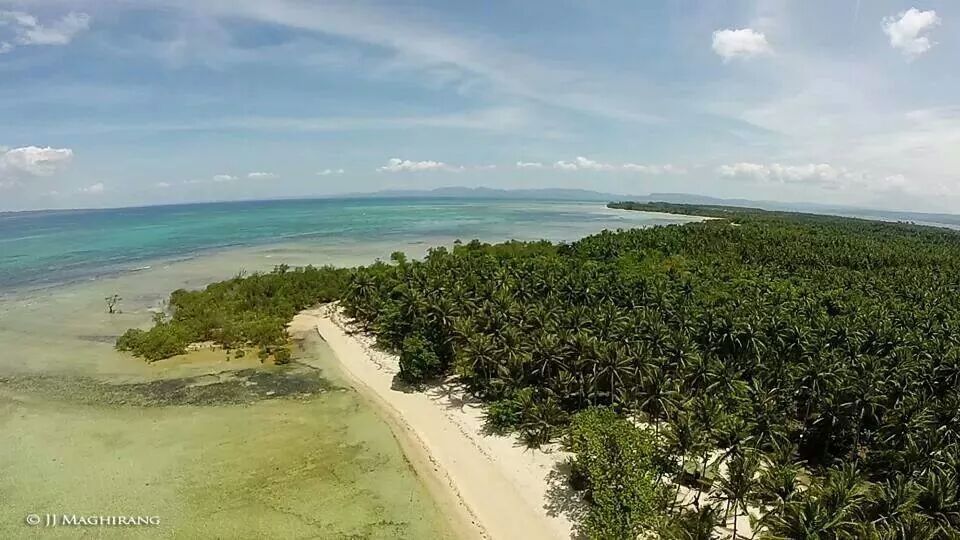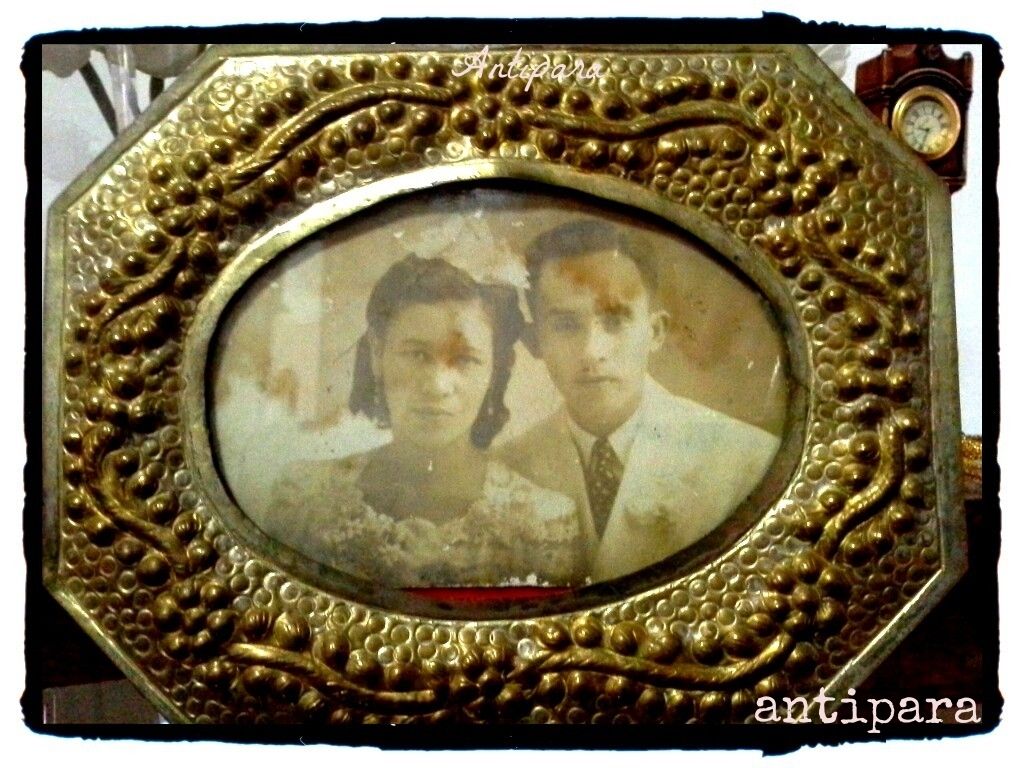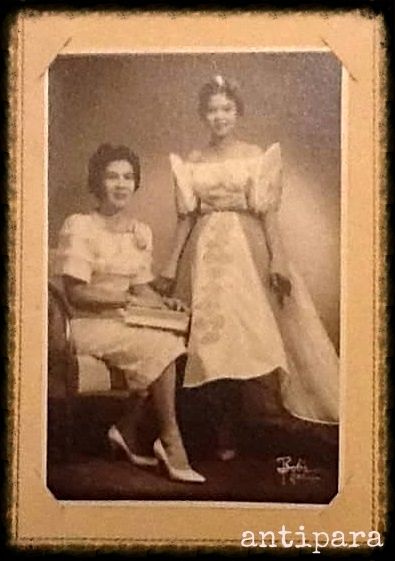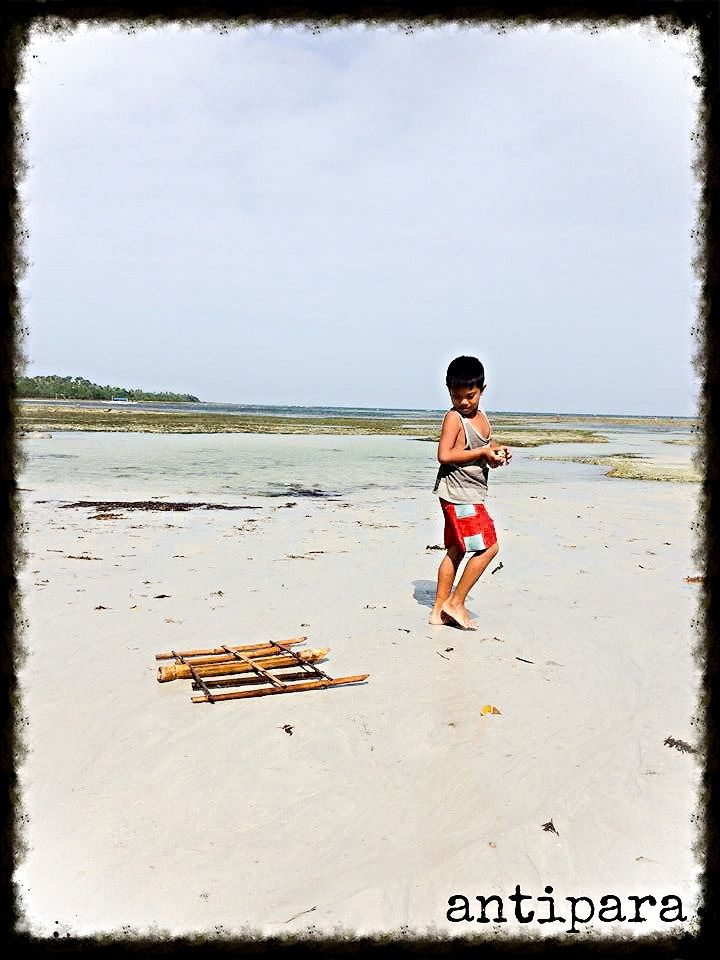Cagbalete Island has currently been featured amongst the
Best Unspoiled Beaches in the Philippines and here are
5 Reasons why you should consider
Cagbalete Island as your
next Beach Destination.
1.) EXCITING BOAT RIDE -
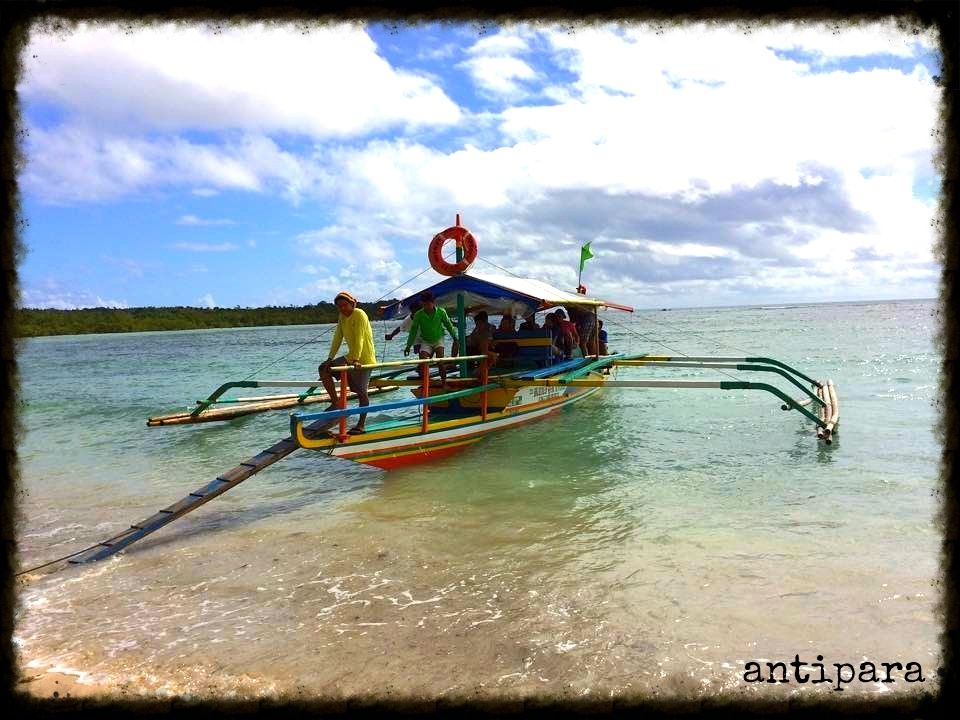 |
| Arriving in Nilandingan Cove via the Chillest Boat Ride Ever! |
Getting to Cagbalete Island is by
Boat. Yep, the
boat with
Bamboo Floaters on the side and not Ferries or those fancy speedboats you find in other more well-known islands. So much luxury and ease but where's the fun in that right? The Boatride to Cagbalete is more primitive yet safe as well. I have been traveling to and from the Island ever since the 1980's and I have yet to experience a totally unsafe boatride.
Riding with the waves is so much fun! A little saltwater sprinkle that will make you and your friends shout for joy is part of the fun.
We are after all off to a Beach right? It's nature Cagbalete Island-goers want and its Nature they get. :)
2.) EXPLORE THE EXPOSED SEABED DURING LOWTIDE -
 |
| Visit pools that vary in size during lowtide and float around or observe the sealife |
What really sets
Cagbalete Island apart from other Island beaches in the country is the
evident play of tides. When you say low tide, the water recedes to as far as
1km on some points and leaves the exposed seabed. How low the tide can get is dependent on the type of moon we have. There are times called
"tag-gilaw" when the water does not completely empty but it becomes very peaceful and still. When the moon is full, the water is at its lowest. I enjoy my time in this 4-6 hours everyday by going around and turning some rocks over revealing the different types of marine life left by the sea. Sea cucumbers (
ti** ng Kabayo in the local dialect), small fishes,
starfishes,
brittlestars,
small crabs, sea urchins and the occasional
baby octopuses and small
sting rays can be seen.
3.) FEAST ON THE FRESHEST SEAFOOD -
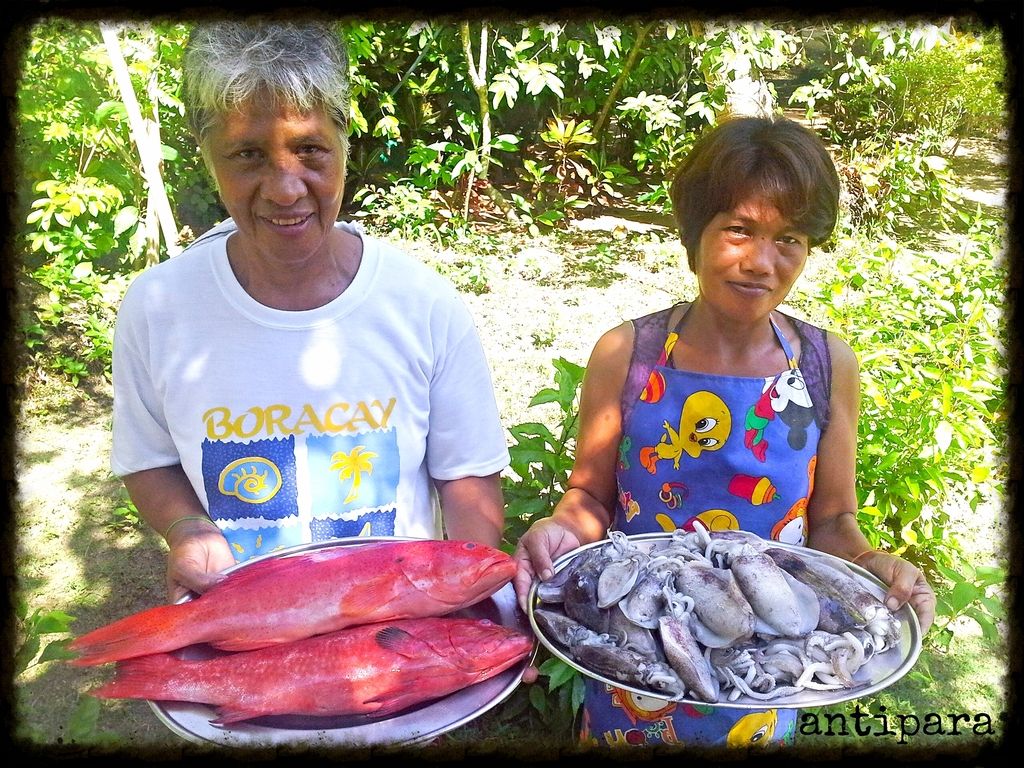 |
| Freshly caught Sunno Lapu-Lapu and Squid. Perfect for that Beach Lunch. |
With the rich
Lamon Bay as its home, Cagbalete Island is your
seafood lover's paradise. Different types of
squid and
cuttlefish abound as well as
fishes and
crustaceans. Buy direct from the fishermen with their catch from early morning fishing.
Crabs as big as
2 kilos each are caught in the rocky mangrove areas.
4.) ECO-TOURISM AT ITS BEST -
With no electricity and not much connection to the mainland, Cagbalete's places to see and visit are all gifts from nature. Here are some of the natural attractions you must visit.
a.) Yang-In
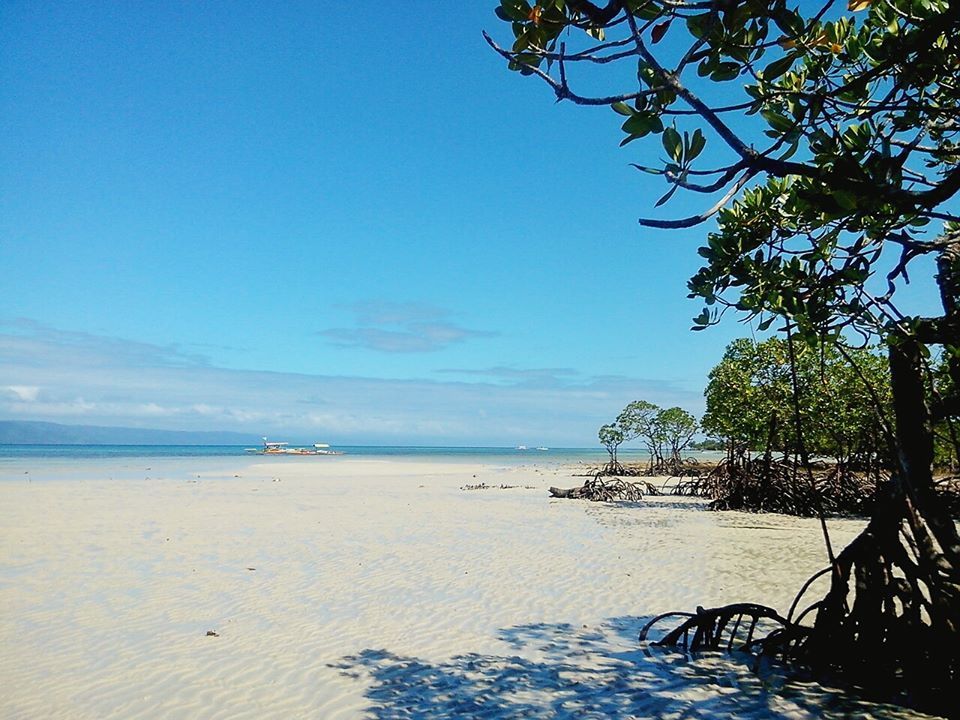 |
| The vast expanse of exposed white sand during lowtide called Yang-In, courtesy of Villa Pilarosa's facebook page |
A large expanse of pure
creamy white seabed that becomes a
sandbar during
lowtide. Easily accessible by
Villa Pilarosa in Cagbalete Dos.
b.) Rio de San Jose
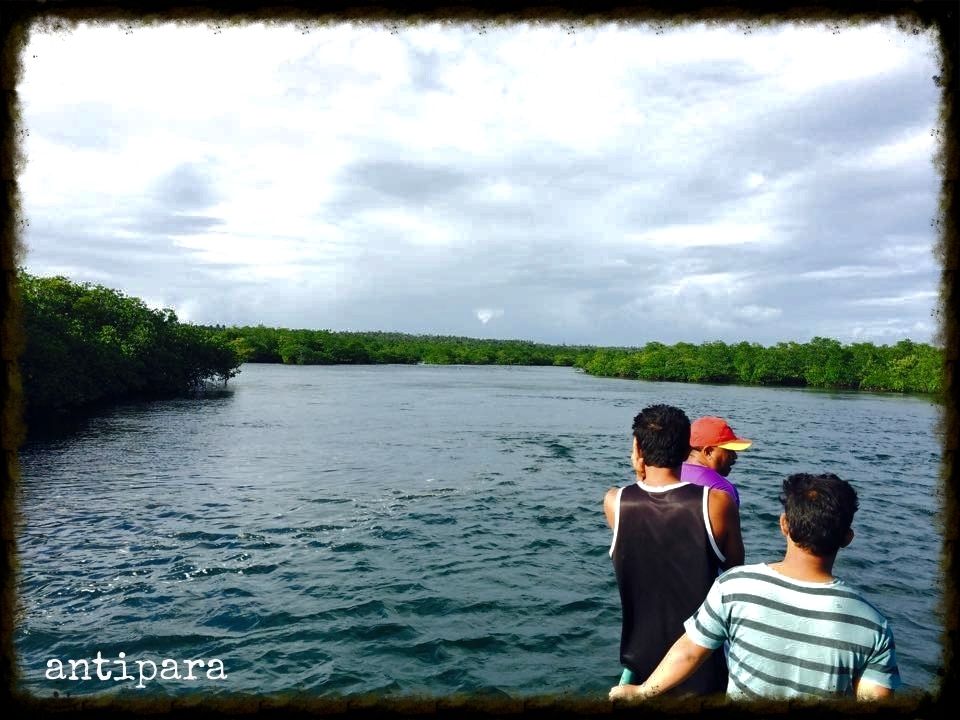 |
| Entering the Rio de San Jose which is a river bounded by Mangrove Forests on both sides. |
The closest thing the island has to a
real river. With
Mangrove trees to the left and right, this used to be the habitat of the
saltwater crocodile that inhabited the island before. Sadly (or happily) the crocodiles were poached to extinction for their leather in the latter part of the century. Some areas in the river form part of the
Nilandingan Cove property.
c.) Dasi or "Bonsai Island"
 |
The Bonsais of Bonsai Island. Photo courtesy of Discover Villa Cleofas facebook page
|
Three
Bonsai'd Mangrove Trees in the middle of the ocean. During lowtide though, a mini island
emerges with nooks and crannies worth exploring.
Villa Cleofas is the best jump-off point to this area and is credited to have christened it as the now more well-known name of "
Bonsai Island".
d.) Natural lowtide Jacuzzis
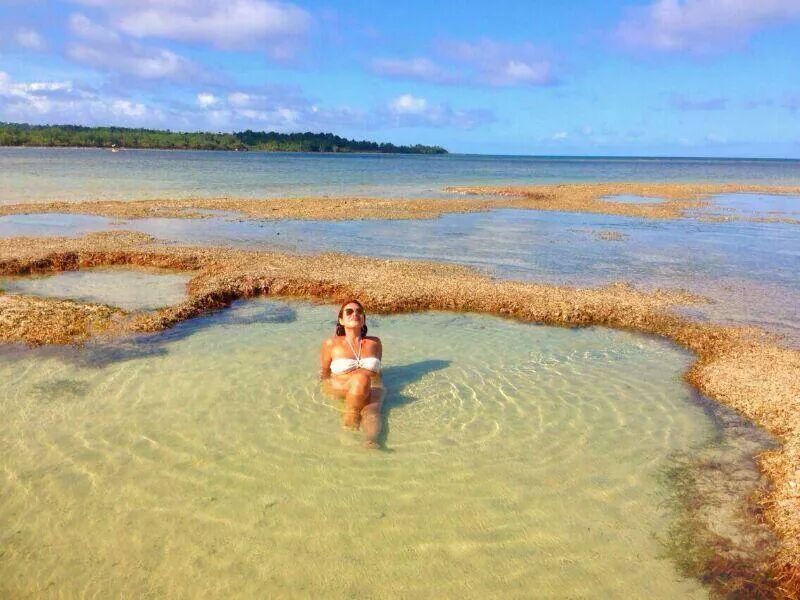 |
| Fancy a dip during lowtide and just basking under the sun? Photo courtesy of Pareissa Moini |
|
For those who would find it too
tiring to walk far out to the sea during lowtide. These
natural pools left as the water receded, are cooling and fun. Lounge around with some
small fishes trapped inside and watch them swim around you. A unique feature of
Nilandingan Cove.
e.) Paet
 |
| Paet. Imagine crossing this during high tide for an adventure. Be careful of the current though. Photo courtesy of Deo Vito uploaded at the MVT Sto Nino facebook page. |
A saltwater mini-river that's one of the island's
best swimming spots especially during lowtide. Best accessed through
MVT Sto Nino.
f.) The "Magic" Tree
 |
| Nilandingan Cove's "Magic Tree". Make a wish? |
One of the
most pictured spots in the island, It's a
lone tree that stands apart from the rest of the Mangrove Forest that separates
Nilandingan Cove from the rest of the Eastern long beach. The emptied out center of the tree was said to be an
entry point to another
dimension. The Tree is one of
Nilandingan Cove's main destinations.
g.) Nakahigang Balete
 |
| Nakahigang Balete Beauty. Photo by Jan Degollado. |
Imagine Pocahontas'
Grandmother Willow in the flesh. A leaning
Balete Tree in the middle of a forest complete with large roots that makes it look like a
mini-cathedral. During rainy season, the area around the tree is submerged in knee-high water. Also part of
Nilandingan Cove.
h.) Bulas
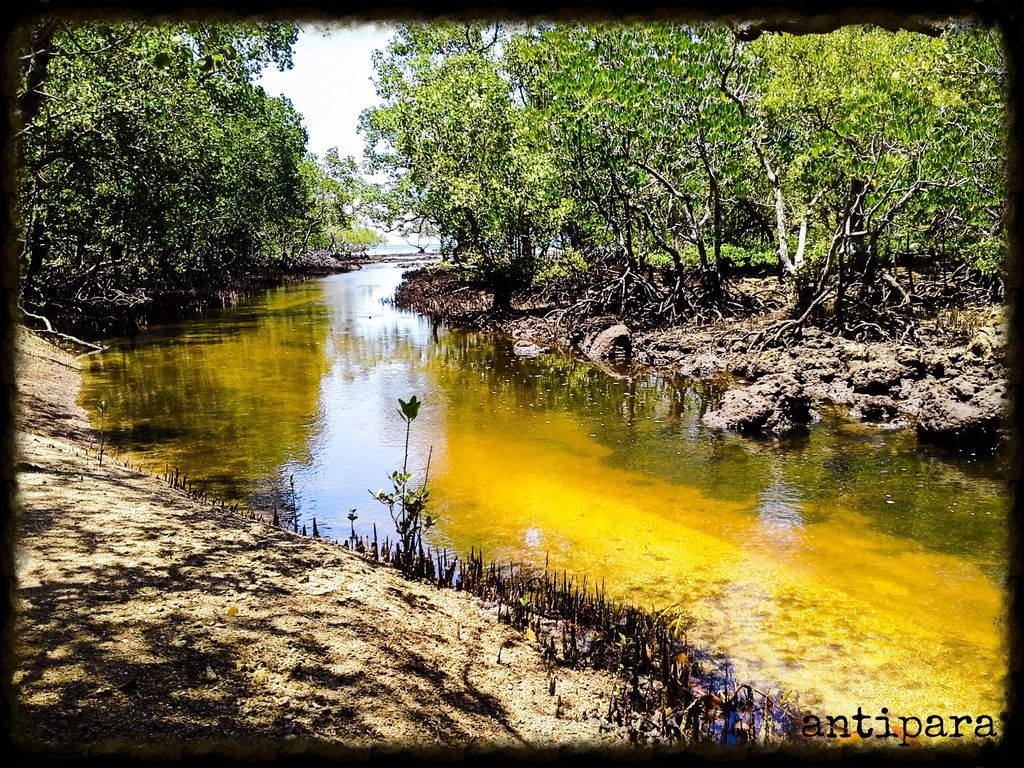 |
| Bulas emptying out into the sea. Nice place for that cold dip or just floating around. |
One of my
secret spots to swim in when its lowtide. The place is so quiet, with the cold rushing stream that you feel like a
fairy will come out anytime. This is the area where another mini saltwater river empties out into the ocean. This is also one of the areas you can visit while in
Nilandingan Cove. Lord of the Rings much?
i.) "Buntis" or Gabriel's Point
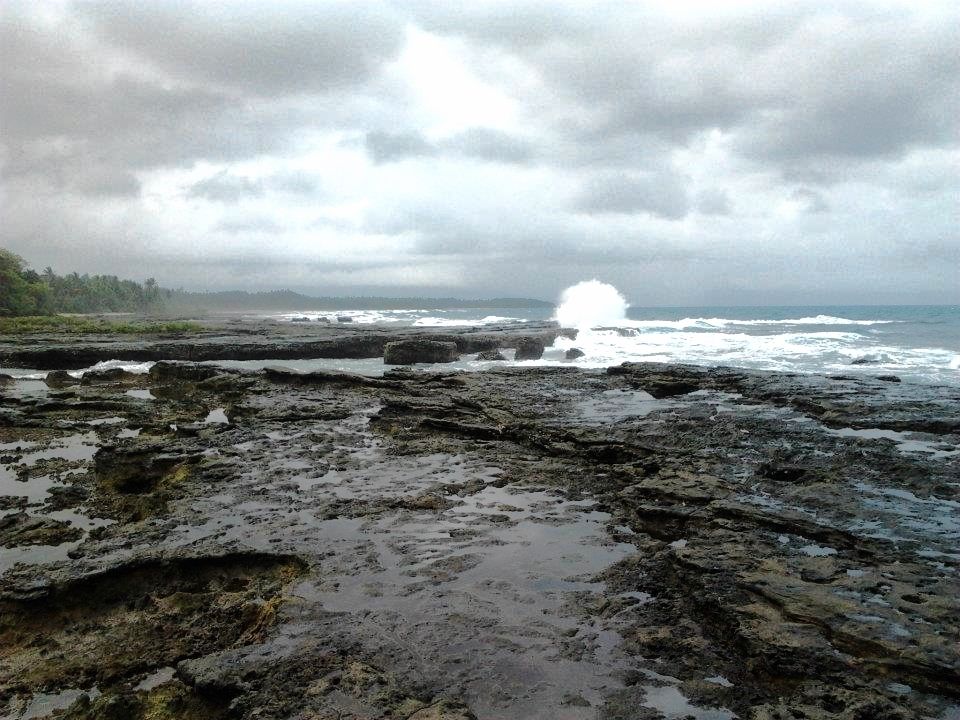 |
| The Ridge called "Buntis" on the Northernmost part of the Island. Photo courtesy of Kuya Gusting Cuanan |
Cagbalete Island's
main picnic spot before.
Buntis is a large rock in the northern part of the island with a ridge-type area that looks like
tectonic plates. When the waves hit the rocks, the water sprays
tree-high. I haven't really swam here, but locals say that its a deep drop and they also tell of an
underwater cave in this area.
5.) CATCH THE MOST AMAZING VIEW OF THE SUNRISE FOR THAT "SUNFIE" (Sun Selfie)
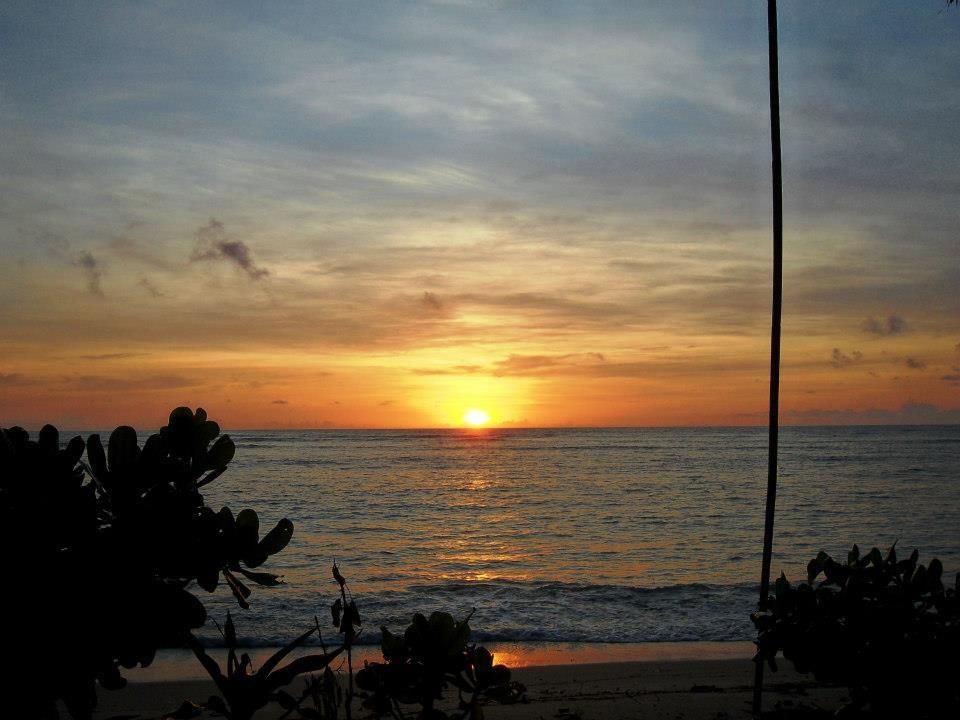 |
| Beautiful Sunrise captured at Nilandingan Cove. Photo by Jan Degollado |
Nuff said. Not much words. Just the
beauty of the
rising sun. :)
Make sure to cover these 5 Reasons to make the most out of your Cagbalete Adventure!
Because Life is DEFINITELY Better at the Beach! See you in Cagbalete!
Photo Credits mentioned to Jan Degollado, Deo Vito and the MVT Sto Nino fanpage, Tita Cynthia Almirez and the Villa Pilarosa fanpage, Tito Tonet Reyeg and the Discover Villa Cleofas fanpage, Kuya Gusting Cuanan and Pareissa Moini. Thank you!















